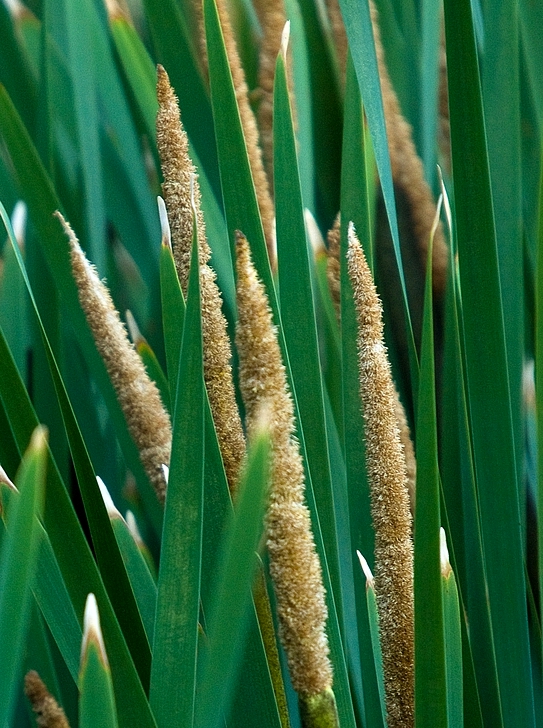Cattail
[Back to the Edible and Medicinal Plants list]
 |
| Photo by Greg Tensmeyer |
(Typha latifolia - Cattail Family)
Edible and medicinal value: This plant is truly the pantry of the outdoors. Young spring shoots can be pulled and the outer leaves peeled away so that the tender inner portion can be eaten raw. The Cattail flower spikes can be boiled and eaten just like corn on the cob. Pollen from mature flowers can be collected and used with other flour to make pancakes, muffins, or biscuits. The root can also be dug, boiled or baked, and made into a flour. The leaves of the Cattail were used to make floor mats for a tipi or lodge.
Some Indians would use the downy fruits to make a dressing for burns and scalds. They also used the down, as we would talcum powder, on infants to prevent chafing. Smallpox was even treated with a mixture of coyote fat and the downy material by applying it to the sores.
The Cattail can also be used as a source of survival. The flowers are excellent tinder. The fuzz explodes into flames and can be used to start a fire. The down can also be used as insulation in boots or jackets to prevent frostbite.
Habitat: Familiar plant of swamps, ponds and edges of streams and other marshy habitats.
Description: Cattails have light green, flat leaves. The flowers are in a dense, brown spike at the top of a 4 to 8 foot stem.
[Back to the Edible and Medicinal Plants list]

